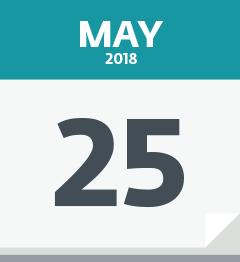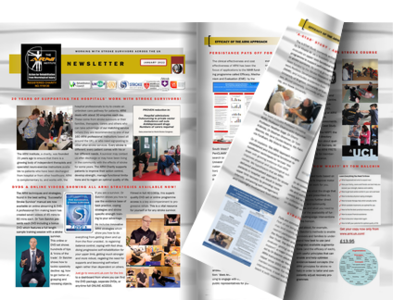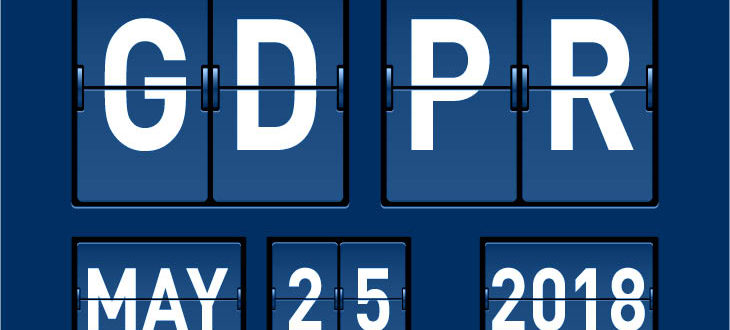Aside from helping the brain heal, deep sleep also offers other, fantastic benefits to stroke survivors.
For example, REM sleep – the deep sleep that occurs at intervals throughout the night – helps your brain process motor information. When your brain achieves REM sleep, there are spikes of neural activities that occur, known as sleep spikes. During these neural spikes, the brain transfers short-term memories about muscle movement to the temporal lobe where they become long-term memories.
Therefore, quality sleep can actually help stroke survivors regain proper muscle movement and strength. Since most stroke patients struggle with mobility problems, this is an incentive for stroke patients to focus on getting enough sleep.
www.arni.uk.com
#ARNIstrokerehab #arnistrokecharity #Stroke #strokesurvivors #neuroplasticity #neurorehab
... See MoreSee Less
A remarkable new rehabilitation tool has been developed under the guidance of the brilliant Prof. Kenneth Fong! 🧑💻 The device is called the Powered Rehab Skateboard, and it's specifically engineered to help stroke survivors regain function in their weakened arms from the comfort of their own homes.
Arm exercises are obvs incredibly difficult to perform consistently; which is where the 'skateboard' comes in. It's essentially a smart, motorised platform that provides gentle support for the affected arm. Through carefully programmed, repetitive motions, the device guides the limb through therapeutic movements, effectively making daily, intensive physical therapy, to back up the home 🏡 rehab work your ARNI trainer is helping you with, possible . 💡
ARNI Stroke Rehab UK comments that this appears to be a fantastic blend of engineering and rehab know-how 🧐 To find out when UK stroke survivors might be able to buy or use it, patients and caregivers should check for updates through relevant NHS rehabilitation services or look for official announcements from Prof. Kenneth Fong’s research team 💪🧠✨
www.arni.uk.com
#ARNIstrokerehab #StrokeRecovery #RehabTech #PoweredRehabSkateboard #MedicalInnovation #ProfessorKennethFong #Hemiparesis #OccupationalTherapy #HomeRehab 💙
... See MoreSee Less
The ARNI approach recommends that a good 70% to 80% of your time doing upper limb work should be spent attempting grasp and release work exclusively, even if you can’t do it. You’ve got to try. The reason for this high percentage is that you may well be activating your arm a lot during your daily activities anyway. But the more-affected hand can often remain un-used. Attempt stretches and exercises as soon as you can, even if you can’t divine a flicker of movement yet in your hand.
And remember we have trainers throughout the country who can help. Call us on 0203 053 0111 or email support@arni.uk.com to see if there's one near you.
swww.arni.uk.com
#neuroplasticity #strokerecoveryexercises #strokeexercise #neurorehab #exerciseafterstroke #strokerehabilation #strokerehab #neurorehabilitation #strokerecovery #strokerehabilitation
... See MoreSee Less
The UK-based company eXRt Intelligent Health has just announced the launch of their revolutionary platform called Resynk 🚀 This health platform is designed to tackle the critical problem we have of just not receiving enough intensive therapy.
The core technologies involved are VR and AI. Patients use a lightweight VR headset to immerse themselves in clinically designed therapeutic games that mimic real-world movements, focusing on crucial upper limb functions like reaching, grasping, and fine motor control.
The genius of the system lies in the integrated AI: it monitors and tracks every single movement, right down to fine finger movements, and automatically adapts the games in real-time to suit each individual patient's motor skills and progress. This has been shown to help survivors overcome difficulties, minimise pain and keeps them motivated to continue their therapy for longer periods, with studies showing a significant increase in therapy dosage.
Resynk is intended to be used under the guidance of healthcare professionals (who can remotely monitor progress through a secure web app) and can help survivors to self-manage their recovery journeys. Resynk looks set to empower users and give them a structured path to regaining function and independence. Keep an eye out for the launch 💙🧠✨
www.arni.uk.#ARNIstrokerehabre#StrokeRecoveryo#resynke#exrtintelligenthealthe#vrinhealthe#AIinMedicinei#rehabilitationa#MedicalInnovationa#hopeforsurvivorsi#NHSInnovationation
... See MoreSee Less
Forget complicated procedures; the latest high-impact research suggests that a routine ultrasound scan of the carotid arteries in the neck could be the key to early detection of possible impending stroke...
A quick look at these crucial blood vessels can spot potential issues, like plaque buildup or narrowing, that are often silent warning signs of an impending stroke. The findings are especially vital because catching this risk early allows doctors to intervene with preventative strategies before a serious event occurs. 🏥
Btw, the research was spearheaded by experts at University College London (UCL) and involved a significant group of 1,631 men, aged specifically between 71 and 92. Full details were published in Journal of the American Heart Association. 🧐 It found that a quarter of those with the least flexible arteries were 2.5 times more likely to develop stroke or heart failure compared to those with the most flexible arteries.
This discovery is a brilliant example of how straightforward diagnostic tools can lead to profound health outcomes, offering a simple, actionable step for older men to take control of their vascular health future. Let's spread the word about this promising breakthrough! 💙👨⚕️
www.arni.uk#ARNIstrokerehabR#strokepreventionn#MensHealthAwarenesse#UCLResearche#jaha##MedicalBreakthroughr#preventativehealthe#ultrasoundscandScan 💡
... See MoreSee Less
One thing you need to know is that although there is evidence that functional control of your hand will only improve once you gain more control over joints which are closer in towards the body (proximal) rather than further away (distal), recent evidence suggests that you should be also be trying to work with your fingers and thumb right from the start rather than waiting for your arm to get stronger in order to position your hand accurately.
Call us on 0203 053 0111 or email support@arni.uk.com to see if there's a trainer near you who can help you.
www.arni.uk#strokeexerciser#exerciseafterstroket#strokerehabr#strokerecoveryexercisesc#StrokeRecoveryo#neurorehabr#neuroplasticityi#strokerehabilationa#neurorehabilitationa#strokerehabilitationation
... See MoreSee Less
Try fixing your eye upon a point on the far wall, then checking the ground in front of you with your peripheral vision and a quick head-dip when needed to reassure yourself that it really does not present any hazardous pitfalls. This technique really works. Don’t look too high up, however, when the chin is too high, the body will follow and lean back.
www.arni.uk.com
#strokerehabilitation #neurorehabilitation #strokerecovery #strokerehab #strokeexercise #neurorehab #strokesurvivorscan #strokerecoveryexercises #exerciseafterstroke #strokerehabilation
... See MoreSee Less
Have you ever conquered regression in rehab/training?! Sophie N asked me: There's one aspect of stroke recovery that I don't see discussed. It's variously called regression, decompensation and recrudescence. It's something that can happen to stroke survivors several years after slow but steady improvement. I wonder whether ARNI could provide information on this?
She's right. I replied that I do mention this in Successful Stroke Survivor, using the term 'negative neuroplasticity'... It's one of those things that in actual fact the majority of physios know about, but only really in abstract - and don't know how to actually help a stroke survivor to deal with it - I've never heard it being mentioned anyway.
I'm absolutely convinced that a way to tackle this is have weightlifting as part of one's way of life... strength gain has part-equivalence in the evidence to function-gain, which is a great thing to know - and it makes sense in a way when one understands that one can use it to tackle regression, which can happen extremely easily.
One (time-telescoped) example - I have had total foot drop (ankle and toes just don't work) for nearly 30 years - and my foot drags sometimes, especially when it's cold. I know it means I'm not lifting my knee enough and nor getting enough lift on the back-swing during walking.
So, every 3 to 4 days, I HAVE to lie prone on the end of my bed and do leg curls. My first set after 4 days, I can only get 3, then the next set, I can do 9, then the next, I've got 15, I'll do one more of that and leave it there - and for the next few days, I'm walking brilliantly again - and then my walking gets worse. So, this is a coping by strength-gain thing, not a recovery-by-strength thing - but I've come to terms with that.
This is at least sortable - worse is when one loses functional gains and can’t get them back - upper limb spasticity is another example.
HAVE YOU HAD AN EXAMPLE OF REGRESSION??
www.arni.uk.com
#ARNIstrokerehab
... See MoreSee Less
If you have spasticity and find it hard to reach away from your torso, you may tend to ‘throw’ your more-affected arm at a task mainly by activating your shoulder joint. This stands in contrast to a more controlled movement sequence, where your arm can move away from your torso using your shoulder, elbow and wrist joints to help position your hand to complete a task. The latter situation is better than the former. Success at reaching therefore needs to be trained for.
Need some help? Call us on 0203 053 0111 or email support@arni.uk.com to find out if there's a trainer near you.
www.arni.uk.com
#neuroplasticity #neurorehab #strokerecoveryexercises #exerciseafterstroke #strokeexercise
... See MoreSee Less
Core exercises are essential for improving balance and stability throughout the body. They enable us to not only stay balanced while we sit or stand, but also to maintain balance while walking.
www.arni.uk.com
#strokeexercise #StrokeRecovery #ARNIstrokerehab #neuroplasticity #strokerehab #strokesurvivorscan #neurorehab #arnistrokecharity #strokerehabilitation
... See MoreSee Less
 Welcome to the new Data Laws coming in to effect tomorrow: May 25th.
Welcome to the new Data Laws coming in to effect tomorrow: May 25th.



5 Comments
Excellent support from my personal trainer Patrick Hoad. Arni fills the huge gap left in stroke rehabilitation care that is left after you leave hospital/ rehab unit and is the only organisation that has kept me informed of stroke rehabilitation. Developments through email and their excellent conferences/ group training sessions
ARNI does excellent work in stroke recovery and rehab, well done
The ARNI Charity does such fantastic work;there is nothing quite like it in the rehabilitation of Stroke survivors .
Great Job and well done
Keep up the brilliant work!